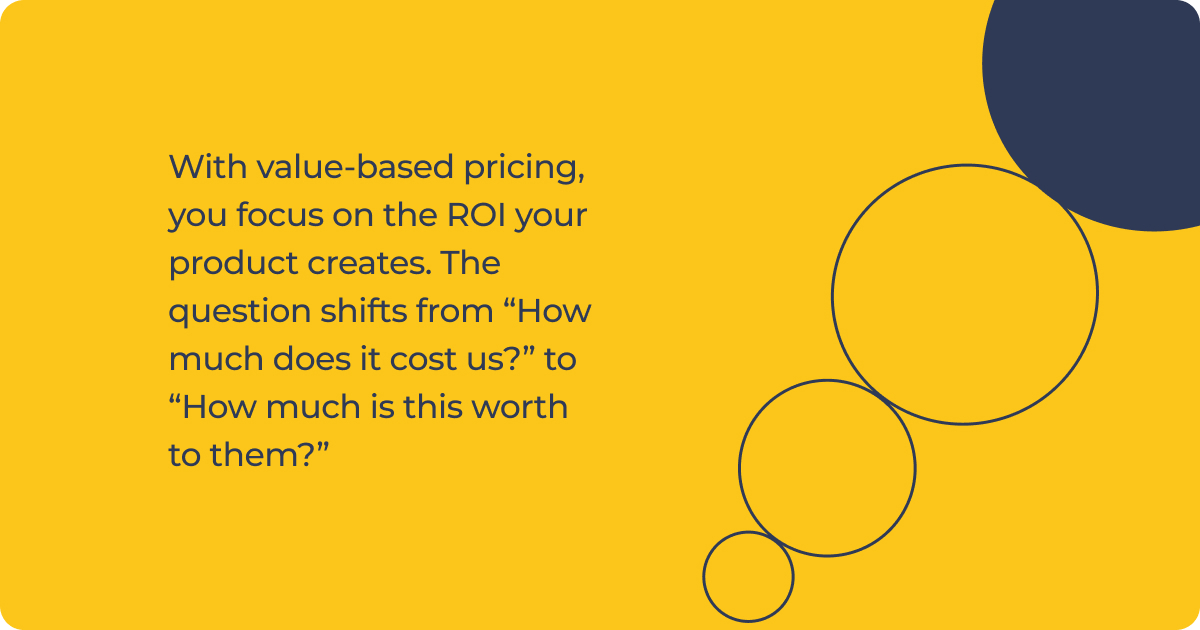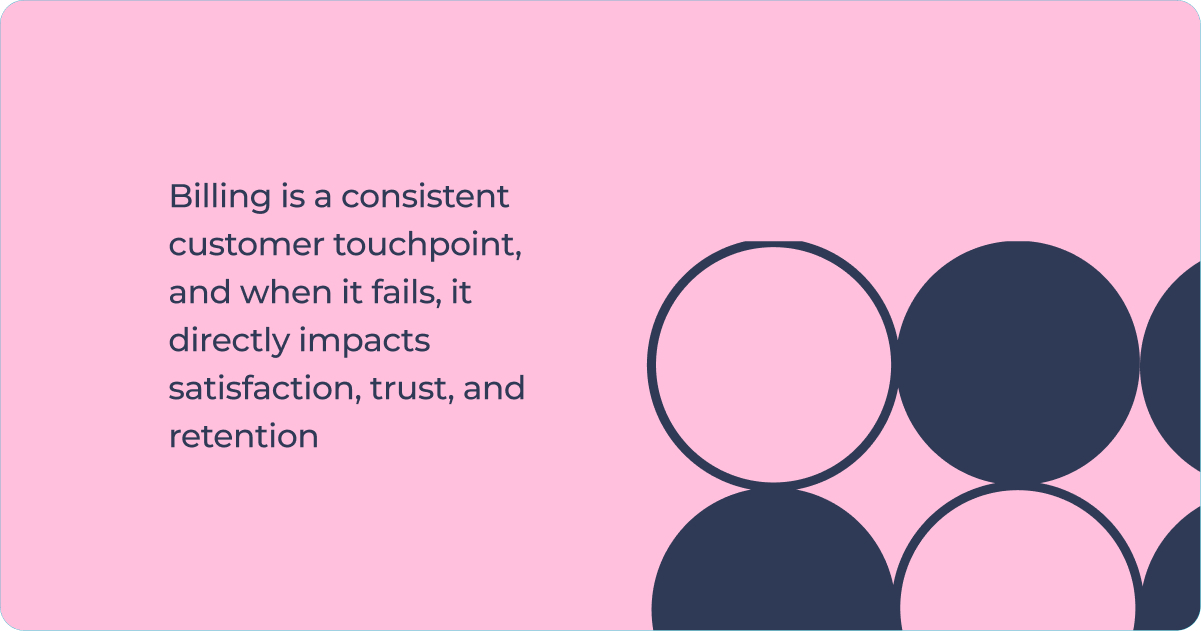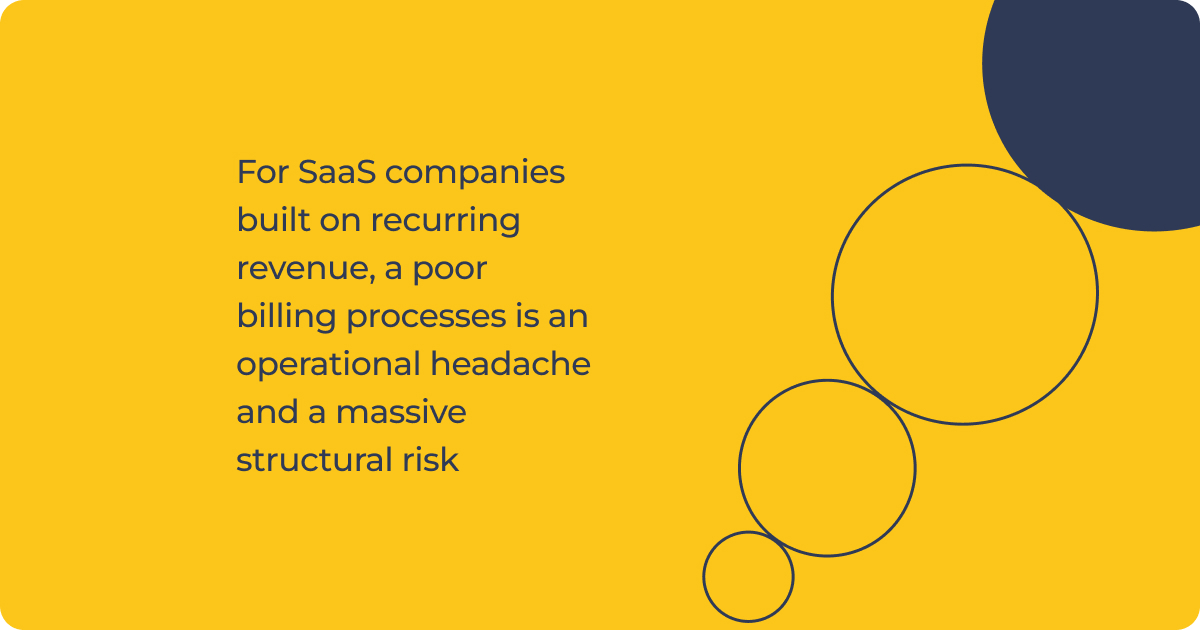Traditionally SaaS companies have relied on simple pricing formulas. They add up costs, apply a margin, and compare with competitors. It’s simple but it rarely captures what customers are willing to pay. Value-based pricing flips that logic. Instead of asking “What will cover our costs?”, it asks “What is this worth to the customer?” The result is pricing that reflects the value your product delivers.
In this article, we’ll unpack what value-based pricing means, how it differs from cost-based models, and a repeatable framework you can use to calculate and validate your prices including real-world examples and methods to test Willingness to Pay.
What Is Value-Based Pricing?
Value-based pricing means setting prices according to the measurable outcomes your customers achieve, not just the cost of delivering your product or what your competitors charge. In cost-plus pricing, you might calculate internal expenses, add a margin, and call it a day. In market pricing, you benchmark against competitors and stay within a safe range. Both are common but neither one ties price directly to customer impact. With value-based pricing, you focus on the ROI your product creates. The question shifts from “How much does it cost us?” to “How much is this worth to them?”
For example, if your SaaS platform helps finance teams automate reconciliations, saving each finance controller 10 hours per month at $100/hour, that’s roughly $1,000 in monthly value per seat. Pricing your product at $300–$400/month provides a strong ROI for the customer and healthy margins for you. The key is to quantify that value and validate that customers are willing to pay for it.
A 5-Step Framework for Value-Based Pricing
- Identify your customer segments
Not all customers measure value the same way. Get started by segmenting your market by role, company size, or outcome. A CFO cares about time savings and compliance whereas a product team might care about speed to launch. - Define measurable outcomes
Next, you must clarify what your product actually changes for the user. Is it time saved, revenue generated, errors reduced, or leads converted? It's important to focus on outcomes, not features. - Quantify the value
After you’ve determined what your product changes for the user, it's time to translate those outcomes into monetary terms. If your platform increases marketing efficiency by 20%, and the average spend is $50,000/month, you’ve created $10,000 in value. - Validate Willingness to Pay (WTP)
Now it's time to test your assumptions with real customers. Surveys, interviews, and experiments will reveal what people actually consider “worth it.” - Design pricing around that value
Once you understand the perceived value range, it's time to translate it into structure like usage tiers, outcome-based bundles, or hybrid pricing models that balance fairness and predictability. This process helps you connect customer outcomes directly to pricing.
Turning Outcomes into Price Points
Let’s walk through a simplified scenario. Your SaaS tool automates reporting for marketing teams. On average, it saves each team 10 hours per month. At an estimated $50/hour, that’s $500 in value per user, per month.
Now apply a value-based pricing lens:
- Capture 30–40% of that delivered value in your price.
- That gives you a price point between $150–$200/month per seat.
- Offer volume or commitment discounts to support scalability.
You’ve just established pricing that’s rooted in the customer’s ROI, not your internal costs. And because customers clearly see the link between usage, results, and price, adoption and retention naturally improve.
Handling Intangible Benefits
Value can’t always be measured easily. Some SaaS products deliver benefits like peace of mind, brand protection, or risk reduction.
In these cases, use proxy metrics:
- For an analytics product, track faster decisions or fewer reporting errors.
- For compliance tools, estimate the cost of fines or manual audits avoided.
- For a cybersecurity platform, measures avoided downtime or reduced incidents.
Even intangible benefits can be monetized when framed through measurable impact. Customers don’t just pay for features; they pay for outcomes and assurance.
Validating Willingness to Pay
Knowing what customers should pay is one thing but knowing what they will pay is another. Validating WTP bridges that gap by replacing assumptions with real customer data. It’s how SaaS companies turn pricing theories into evidence-based decisions.
There are two main ways to validate WTP. The first being qualitative research and the second being quantitative research. Each reveals a different layer of insight into how customers perceive value and make purchase decisions.
Qualitative methods
Customer interviews reveal what users truly value, how they describe ROI in their own words, and what makes your product feel “too expensive.” Pair these with perceived value exercises, where customers rank pricing tiers or feature bundles to gauge sensitivity before larger tests. These insights will provide the context you need to understand how customers think about value.
Quantitative methods
Once you have directional insights, back them up with data. The Van Westendorp Price Sensitivity Meter identifies the price range customers perceive as fair, while conjoint analysis tests different pricing and feature combinations to see what drives real purchase decisions. These tools quantify value perception at scale and pinpoint the optimal price point for your market.
Designing the Pricing Model
Once you’ve validated Willingness to Pay, the next step is translating those insights into a pricing structure that’s scalable, transparent, and easy to understand. The goal is simple: align what customers pay with the value they receive.
Most SaaS providers succeed by combining elements of following three core approaches.
- Usage-based pricing: Usage-based pricing works best when value scales with activity like API calls, transactions, or data processed. It links cost directly to benefit, letting customers pay only for what they use while you capture upside as usage grows.
- Tiered pricing: Tiered pricing fits when different segments value different outcomes or feature sets. Clear tiers (e.g., Basic, Pro, Enterprise) let buyers self-select based on ROI potential, supporting predictable recurring revenue.
- Hybrid pricing: Hybrid pricing blends a stable base fee with variable components tied to usage or outcomes. It balances predictability for you with flexibility for customers.
Keeping Pricing Aligned with Value
Value-based pricing should evolve as your product and customers do. You must review your pricing regularly, especially after major updates or market shifts, and watch for signs of misalignment like rising adoption without matching revenue or frequent discount requests. The best SaaS companies refine pricing based on data to keep prices fair, competitive, and true to the value delivered.
Common Pitfalls
Even teams with strong frameworks can stumble when putting value-based pricing into practice. Here are the mistakes that most often derail good strategies.
- Skipping research: Guessing at value is the fastest path to mispricing. Without validated Willingness to Pay data, you risk setting prices too high for adoption or too low for profitability.
- Assuming all customers value the same thing: Different segments care about different outcomes. Treating every user the same ignores the nuance that makes value-based pricing work.
- Ignoring churn and retention signals: Pricing friction often surfaces first in renewals, not new sales. High churn or discount pressure may indicate misaligned value perception.
- Failing to communicate value: Even fair prices feel high if customers don’t understand the ROI. Connect every price point to a tangible outcome like hours saved, revenue earned, or risk avoided.
From Value to Predictable Revenue
When pricing reflects the true value you deliver, sales cycles shorten, renewals improve, and growth becomes more predictable. Value-based pricing turns pricing from a guessing game into a strategic advantage. But you also need your systems to keep up, and we spend our time ensuring billing and revenue systems do.
Good Sign provides a contract-centric revenue management platform. This enables you to test pricing and WTP at scale. You can do so in automated, chaos-free platform that connects everything from your quotes, all the way to billing.



